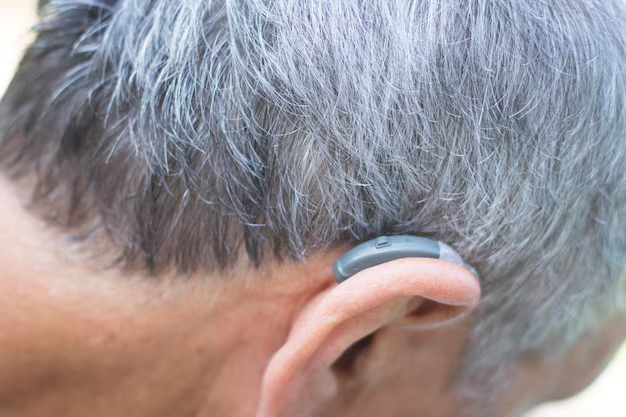Mastering Your Hearing Aids: A Step-by-Step Guide to Getting Them on Right
Struggling to put in your hearing aids? You’re not alone. Many people experience challenges when first learning how to correctly place their hearing aids. Whether you're new to them or just need a refresher, getting it right is crucial for optimal performance and comfort. Let's explore together the tips and tricks that can help you make the most out of your hearing aids right from the get-go.
Understanding Your Hearing Aid Type
Before diving into the steps of putting on hearing aids, it's essential to acknowledge the different types. Understanding the kind of device you have makes the process much smoother.
Behind-the-Ear (BTE)
BTE hearing aids are one of the most common types. They rest comfortably behind the ear and are connected to an earmold or a dome that sits in the ear canal.
In-the-Ear (ITE) and In-the-Canal (ITC)
These devices fit directly inside the outer ear or the canal. Their placement varies depending on the size and design. ITEs typically fill more of the ear while ITCs sit lower in the canal.
Completely-in-Canal (CIC) and Invisible-in-Canal (IIC)
These tiny devices fit entirely within the ear canal, making them virtually invisible. Their small size demands precision during insertion.
Prepping for Success
Before inserting any hearing aid, make these preparations to ensure everything goes smoothly:
- Clean Your Hands: Always wash and dry your hands before handling hearing aids to avoid introducing dirt or bacteria.
- Inspect Your Hearing Aid: Check for wax or debris on the device. Clean it as recommended, ensuring vents and microphones are clear.
- Align the Device: Make sure the device is positioned in the correct orientation before insertion; this is especially critical for ITE and ITC devices.
- Lubricate If Necessary: Some users find that using a personal lubricant can help insert their hearing aids more comfortably. Use a lubricant designed for hearing aids, not household products.
Step-by-Step: How to Insert Hearing Aids
Each type of hearing aid requires a slightly different technique. Here are detailed steps for each:
Inserting BTE Hearing Aids
- Secure the Earmold or Dome: Hold the earmold or dome with your fingers.
- Align it With Your Ear Canal: Gently guide it into the canal, ensuring it aligns with your natural ear shape.
- Settle the Hearing Aid: Once the dome or mold is comfortably placed, lift the main hearing aid over the top of your ear. It should rest snugly behind the ear.
- Adjust as Needed: Gently press to ensure a tight fit within your ear canal, avoiding discomfort.
Inserting ITE and ITC Hearing Aids
- Hold the Device Correctly: Grasp it from the sides rather than the faceplate to avoid pushing buttons inadvertently.
- Line It Up: Align the hearing aid with the outer ear, matching its contour.
- Push Gently: Insert the device, using a slight rocking motion if necessary, to fit snugly within your ear.
- Check Fit: Make sure it settles comfortably without causing any pressure or pain.
Inserting CIC and IIC Hearing Aids
- Hold the Tab: These devices often come with a small tab for easy retrieval. Grasp the tab firmly.
- Position and Insert: Guide the device into your ear canal, and apply gentle pressure to secure it in place.
- Adjust for Comfort: Slight movements can help the hearing aid settle into the most secure and comfortable position.
Common Mistakes to Avoid
🛑 Over-Insertion: Pushing too hard can damage the ear canal or the device. Stop if you feel resistance.
🛑 Incorrect Orientation: Ensure you're aligning the device correctly with your ear anatomy before inserting.
🛑 Neglecting Maintenance: Regular cleaning prevents wax build-up, which can block sound pathways.
Enhancing Comfort and Performance
Regular Maintenance
To keep your hearing aids performing their best:
- Clean Daily: Use a soft, dry cloth and consult your user manual for cleaning vents.
- Store Safely: Keep hearing aids in a dry, safe case overnight.
Customization
Sometimes, standard tips and domes may not fit well. Consult with a hearing care provider about custom earmolds for better fit and function.
Battery and Power Management
- Check Battery Life: Replacing batteries regularly or charging them ensures your devices are always ready.
- Store Batteries Properly: Keep them in their original packaging until ready to use to avoid drainage.
Tackling Discomfort and Troubleshooting
Persistent Feedback: Often caused by a poor fit or earwax. Ensure the fit is secure and check for wax obstruction.
Understanding Sound Quality Issues: If sounds are muffled or distorted, your device may need cleaning or adjusting.
Visual Summary: Key Tips to Remember
- 🖐️ Clean and Dry: Always prep your hands before handling devices.
- 🎧 Check Fit Regularly: Proper placement avoids feedback and enhances clarity.
- 🔋 Battery Check: A full charge or fresh battery keeps aids functional.
- 🤲 Gentle Touch: Be patient and gentle to avoid damage or discomfort.
- 💼 Regular Cleaning: Keeps devices working efficiently.
A Final Word on Practice and Patience
Adjusting to hearing aids takes time and patience. Initially, putting them on might feel challenging, but with these tips and consistent practice, the process will become natural and straightforward. Empower yourself by understanding how your hearing aids function and mastering their use. Engage with your hearing care professional if faced with persistent issues, and remember: personalized advice is always your best guide.

Related Topics
- a Plus Hearing Aid Centers
- a Real Pain Showtimes Near Centerville
- Are Airpods Bad For Your Ears
- Are Apple Second Generation Airpods Hearing Aids
- Are Audien Hearing Aids Just Amplifiers
- Are Costco Hearing Aids As Good As Others
- Are Costco Hearing Aids Good
- Are Hearing Aid Domes Interchangeable
- Are Hearing Aid Subscriptions Worth It
- Are Hearing Aid Tax Deductible